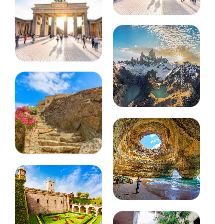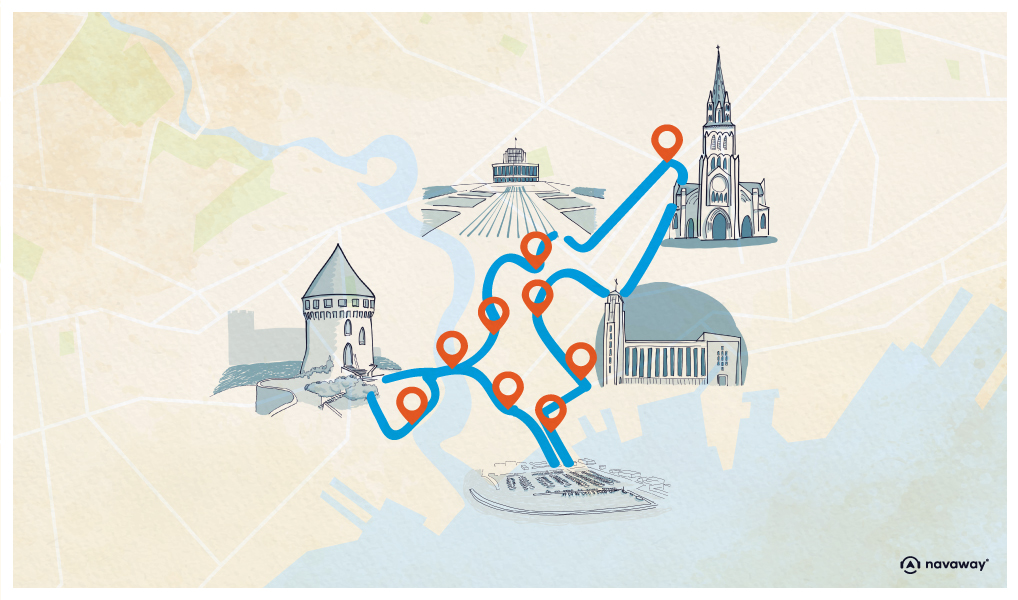
Discover Brittany’s most beautiful lighthouses
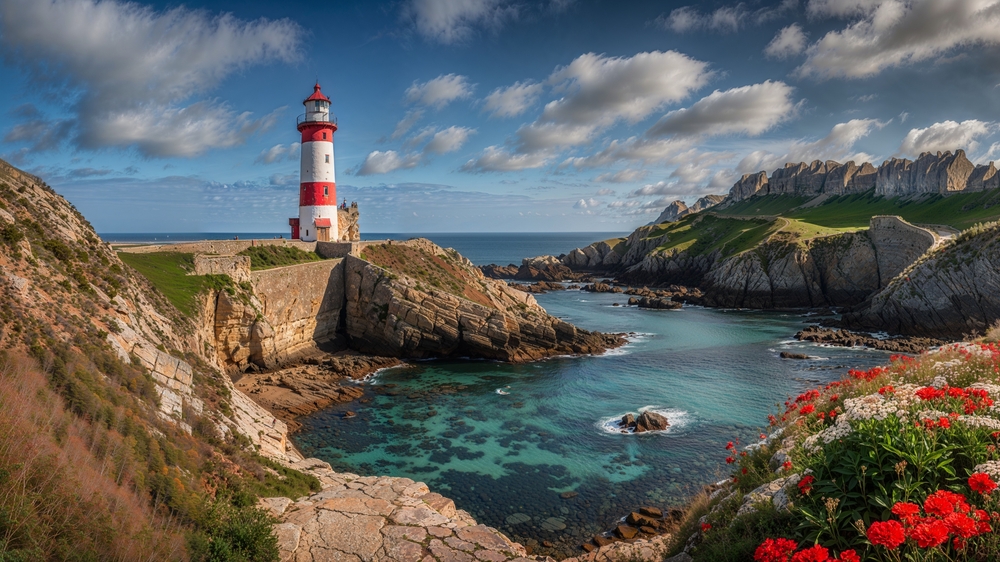
Brittany, with its 1,100 kilometres of jagged coastline and tumultuous waters, is home to more than a third of France’s lighthouses. These sentinels of granite and stone, towering over the Atlantic Ocean, tell the story of the maritime history of this emblematic region. From the imposing Eckmühl lighthouse to the mythical Ar-Men, not forgetting Europe’s highest lighthouse on Ile Vierge, discover these giants of the seas, which have fascinated and protected sailors for centuries.

1. The Eckmühl lighthouse in Penmarch: the giant of South Finistère
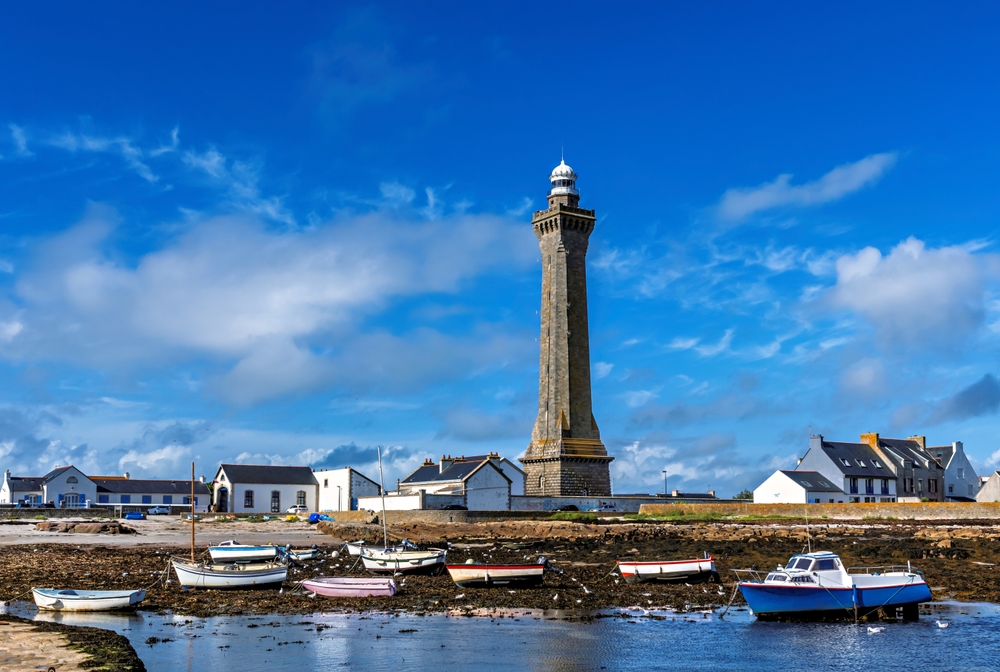
It’s impossible to talk about Brittany’s lighthouses without mentioning the majestic Eckmühl lighthouse. Located in Penmarch in South Finistère, this 65-metre-high colossus has stood proudly since 1897. It was funded by a bequest from the Marquise de Blocqueville, daughter of Marshal of the Empire Louis-Nicolas Davout, Prince of Eckmühl.
This lighthouse has to climb 307 spiral steps to reach its summit and admire an exceptional panorama of the Bay of Audierne. An annual competition is held to see who can climb the steps the fastest! The Eckmühl lighthouse (Rue du Phare, 29760 Penmarch, open from April to November, 06 07 21 37 34) remains one of the most visited lighthouses in Brittany.
See also the Brest guide:
- Top 10 culinary specialities in Brest
- Top 6 things to do in Brest
- The most beautiful villages to visit around Brest
- 12 places to spend an unusual night in Brittany
- 12 unusual romantic weekends in Brittany
- 22 must-do things to do in Cotes-d’Armor
- Top 20 of Brittany’s most beautiful beaches for swimming this summer
- Top 6 of the best seaside campsites in Brittany
2. The Île Vierge lighthouse in Plouguerneau: the highest in Europe
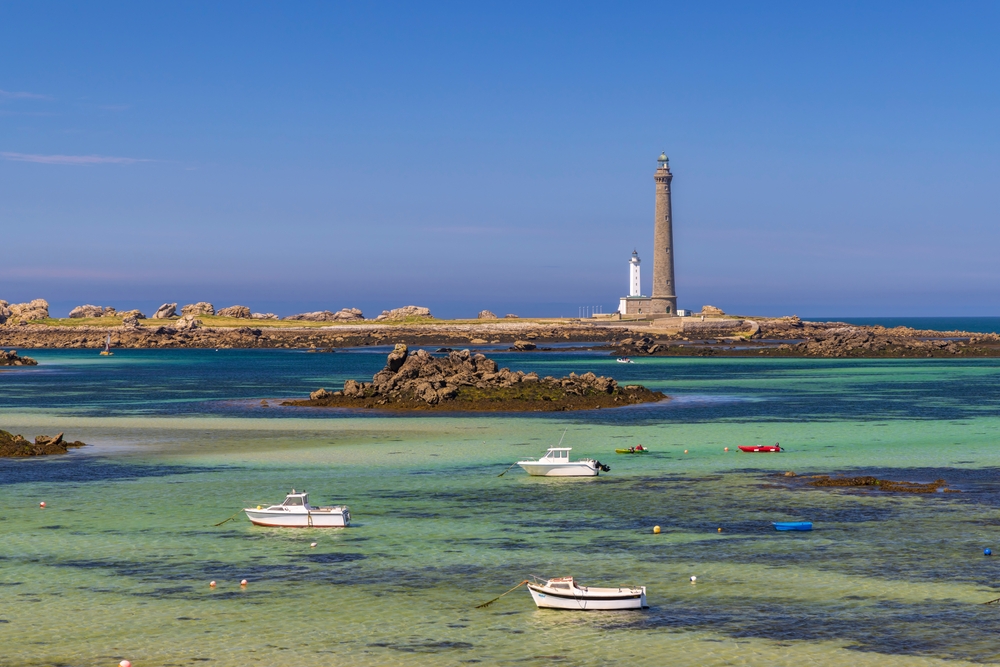
A true European record, the Île Vierge lighthouse stands at 82.5 metres, making it the highest lighthouse in Europe and the highest ashlar lighthouse in the world. Built between 1897 and 1902 on the Île Vierge in Plouguerneau, this exceptional lighthouse requires you to climb 365 steps to reach its summit.
Its spiral staircase, encircled by opaline walls, offers a climb as spectacular as the panoramic view from its walkway. The lighthouse lights up the horizon with a white glow every 5 seconds for almost 42 kilometres. The lighthouse is only accessible by boat from the Abers launches, adding to the exceptional nature of this visit.
3. The Cap Fréhel lighthouse: sentinel of the Emerald Coast
Perched on the pink sandstone cliffs of Cap Fréhel at Plévenon in the Côtes-d’Armor, this 33-metre-high lighthouse offers one of the most spectacular views in Brittany. Built between 1946 and 1950 to replace the previous lighthouses, it towers 85 metres above sea level.
Its 145 steps provide an exceptional view of the Emerald Coast. The Cap Fréhel lighthouse (22240 Plévenon, open from April to November, 02 96 41 43 06) is accessible via a pay car park and is a must for discovering the wild beauty of the Côtes-d’Armor.
4. The Saint-Mathieu lighthouse in Plougonvelin: guardian of the tip of Finistère
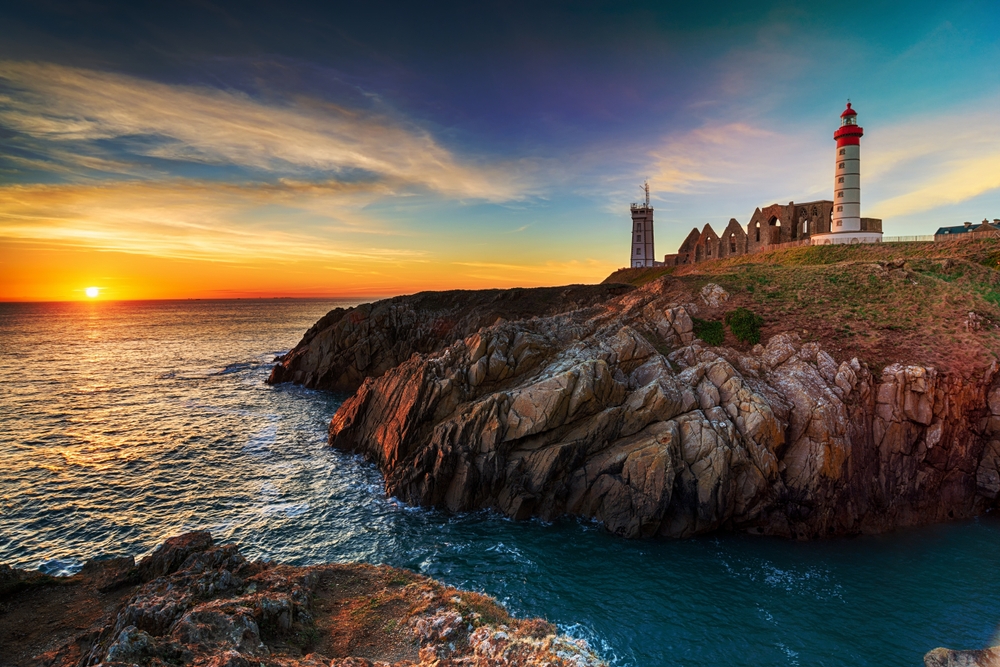
Download the audio tour to discover Brest on foot and on your own
Explore the capital of the oceans with our complete Brest itinerary, which takes you through 27 points of interest, from the Vauban fortifications to the medieval castle and the Explorers’ Gardens. This 8.2 km route will immerse you in the exceptional maritime history of this iconic Breton city.
The Saint-Mathieu lighthouse, located at the eponymous point in Plougonvelin, has the unique distinction of being built in the ruins of an ancient abbey. Inaugurated in 1835, this 37-metre-high red and white lighthouse reaches 58 metres above sea level.
Its 163 steps lead up to a 360° panorama of the Iroise Sea, with views of the islands of Molène and Ouessant. The Saint-Mathieu lighthouse (Place Saint-Tanguy, 29217 Plougonvelin, 06 82 02 05 95) crosses its beam over 40 kilometres thanks to its Fresnel lenses. Visitors can also discover the Brest sightseeing circuit, which includes many remarkable maritime sites.
5. The Petit Minou lighthouse in Plouzané: the jewel in Brest’s harbour
Leaning against the Vauban military fort of the same name, the Petit Minou lighthouse is one of Brittany’s most photographed sites. This 26-metre-high lighthouse, which reaches 34 metres above sea level, marks the entrance to the Brest roadstead along with the Portzic lighthouse.
Access to the lighthouse is via a romantic stone bridge that crosses the fort’s moat. Built between 1839 and 1848 by the architect Léonce Reynaud, the lighthouse was inspired by the towers of Breton fortified castles. The Petit Minou site (Rue du Fort du Minou, 29280 Plouzané) also offers a magnificent beach accessible at low tide and the remains of historic bunkers.
6. Mean Ruz lighthouse in Ploumanac’h: the harmony of pink granite
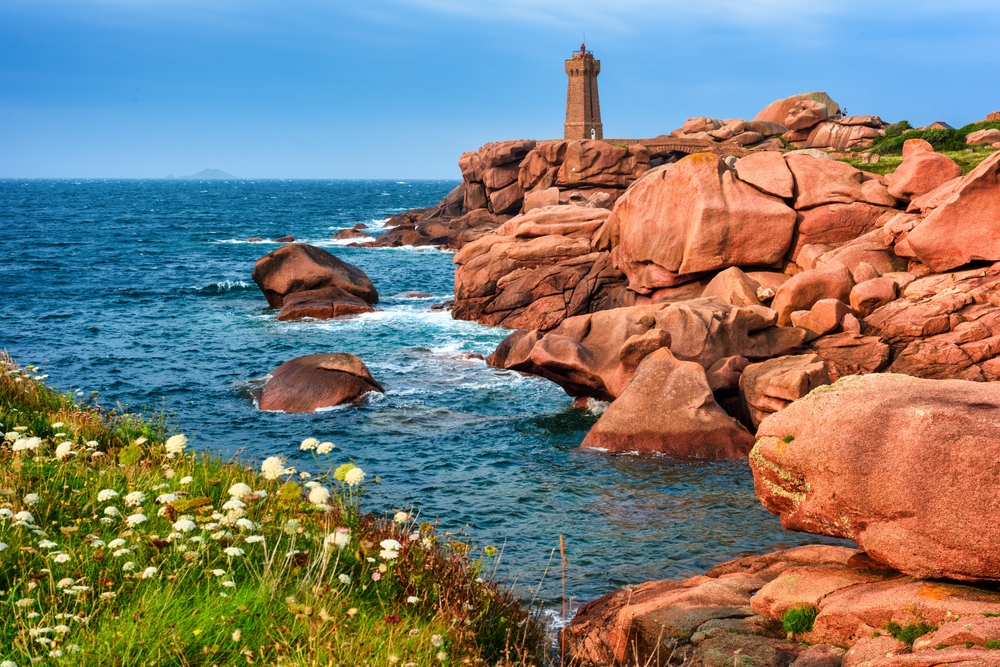
On the famous Pink Granite Coast, Mean Ruz lighthouse in Ploumanac’h has the remarkable distinction of being built from the same pink stones that litter the surrounding coastline. This perfect harmony between the architecture and the natural landscape gives the lighthouse an absolutely unique beauty.
Built in 1946, this 15-metre-high lighthouse stands amidst an exceptional granite chaos. From its perimeter, you can see Costaérès Castle on a small island just offshore. The Mean Ruz lighthouse is an ideal starting point for exploring the customs officers’ trail, which winds between the pink granite rocks sculpted by the elements.
7. Ushant lighthouses: the island of five lighthouses
The Stiff lighthouse: the oldest lighthouse in Brittany
Built in 1695 by Vauban, the Stiff lighthouse is the oldest remaining lighthouse in Brittany. This 32-metre-high lighthouse, located at the north-eastern tip of Ushant, has guided navigators for over three centuries.
The Créac’h lighthouse: one of the most powerful in the world
Lit in 1863, the Créac’h lighthouse is one of the most powerful lighthouses in the world. Its exceptional range of 60 kilometres makes it an essential landmark for navigation in this particularly dangerous area of the Iroise Sea.
The Mare lighthouse: the hell of the seas
Built between 1904 and 1911 on the reef of Ar-Gazeg (La Jument in Breton), this 47-metre-high lighthouse represents one of the most impressive architectural challenges in the history of maritime signage. Situated in the open sea to the south-west of Ushant, it belongs to the category of ‘hells’ due to its total isolation and extreme weather conditions.
This octagonal lighthouse is marked by three red flashes every fifteen seconds. Its construction, financed by a bequest from a member of the Société de Géographie de Paris, required seven years of work in perilous conditions. Listed as a historic monument since 2017, the Jument lighthouse remains inaccessible to the public, but is one of the most photographed lighthouses in the world, particularly during winter storms that create spectacular spray.
8. Ar-Men lighthouse: the hell of the underworld
Nicknamed “the hell of all hells”, the Ar-Men lighthouse represents the ultimate challenge for French maritime engineering. Situated on a wave-beaten rock off the coast of the Ile de Sein, this 37-metre lighthouse is the most westerly point on the French mainland.
Its construction, begun in 1867, took fourteen years of titanic work in inhuman conditions. The workers could only work a few hours a year, only during the rare lulls in the weather. Twenty-three guards came and went in just thirty-five years, testifying to the extreme psychological isolation of this post. Automated in 1990, Ar-Men continues to guide ships through this particularly dangerous area of the chaussée de Sein.
9. The lighthouses of Morbihan: guardians of the gulf
Download the audio tour to discover Vannes on foot and on your own
Discover the medieval city of Vannes with our guided tour of Vannes, which takes you through 18 major points of interest, from the medieval ramparts to Saint-Pierre cathedral, via the famous “Vannes and his wife” couple. Let us guide you through this pearl of the Morbihan, with its many architectural treasures.
Port-Navalo lighthouse: the survivor of the war
Located in Arzon on the Rhuys peninsula, the Port-Navalo lighthouse has a special history linked to the Second World War. This 32-metre-high lighthouse was almost blown up in 1944 by German troops, but was saved thanks to the intervention of the engineer Le Net, who convinced the occupying forces of its strategic usefulness in guiding ships in the Gulf of Morbihan.
Today, this lighthouse marks the entrance to the Gulf of Morbihan and offers an exceptional view of Locmariaquer and the Quiberon peninsula. Visitors can also take advantage of its proximity to visit Vannes and discover the riches of this unspoilt Breton region.
Pen-Men lighthouse on the island of Groix
On the island of Groix, the Pen-Men lighthouse dominates the west coast from its privileged position at 64 metres high. It is a lighthouse house, meaning that the functionality of the lighthouse is integrated into a habitable building. With a range of 54 kilometres, it is the most powerful lighthouse in Morbihan.
The pointe de Pen-Men is also home to an ornithological reserve where many marine species nest in the crevices of the cliffs. This exceptional combination of maritime heritage and biodiversity makes the site a must-see on the island of Groix.
10. Inaccessible lighthouses: observing these giants of the seas from afar
Some of Brittany’s lighthouses remain inaccessible to the public because of their location on the open sea or because they are so dangerous. These “hells” fascinate as much as they impress, due to their isolation and the extreme conditions they face on a daily basis.
The Tévennec lighthouse, nicknamed the “haunted lighthouse”, has had 23 keepers in just 35 years. Legend has it that voices and ghosts haunt this isolated tower, driving some of the keepers mad. Likewise, the Four lighthouse in Porspoder stands out like a giant of granite, planted on its rock in the middle of the sea.
These open sea lighthouses can nevertheless be seen from the coast, particularly from the points and capes that dot the Breton coastline. On stormy days, they offer breathtaking sights as the waves crash against their granite bases.
Plan your Breton lighthouse route
To discover these stone sentinels in the best conditions, choose the period from April to October, when most lighthouses are open to visitors. Finistère is home to the largest number of remarkable lighthouses, from Penmarch in the north to Ouessant.
Start your journey in Brest, the maritime capital of Brittany, where you can visit the Petit Minou and Saint-Mathieu lighthouses and the islands of Molène and Ouessant. Continue south to the Eckmühl lighthouse at Penmarch, then head up towards the Côtes-d’Armor to discover Cap Fréhel and Mean Ruz.
Check with your local tourist office for opening times and weather conditions, which are particularly important when crossing to the islands. Each lighthouse tells a part of Brittany’s maritime history and is well worth a visit for its exceptional location and unique architectural heritage.
In conclusion, Brittany’s lighthouses represent an exceptional maritime heritage that bears witness to the know-how and courage of mankind in the face of the elements. From the imposing Eckmühl lighthouse to the mythical Ouessant lighthouses and the European record-breaking Île Vierge, these granite giants continue to fascinate visitors from all over the world. Discovering them is an extraordinary journey through French maritime history, with each lighthouse revealing its secrets and legends. For a complete exploration of this exceptional maritime region, don’t hesitate to follow the Brest lighthouse tour, which will plunge you into the heart of the world of Breton lighthouses.
FAQ
What is the highest lighthouse in Brittany?
At 82.5 metres, the Île Vierge lighthouse in Plouguerneau is the highest lighthouse in Brittany. It also holds the record for the highest lighthouse in Europe and the highest ashlar lighthouse in the world.
How many lighthouses can you visit in Brittany?
Around ten lighthouses in Brittany are open to the public, mainly from April to October. The most accessible are Eckmühl, Cap Fréhel, Saint-Mathieu and Île Vierge (accessible by boat).
What is a “Hell” lighthouse?
Inferno” lighthouses are those built in the open sea on isolated rocks, such as Ar-Men or La Jument. This name comes from the extreme living conditions of the keepers who lived there, often facing isolation and storms.
When is the best time to visit Brittany’s lighthouses?
The best time to visit is from April to October, when most lighthouses are open to the public and weather conditions allow crossings to islands such as Ushant and Ile Vierge.
200 audioguided tours for cities all around the world
Download